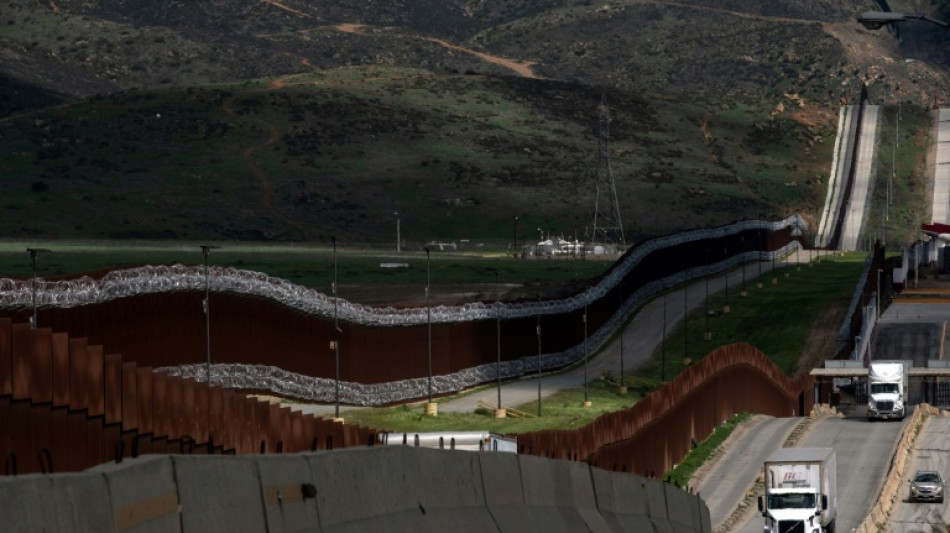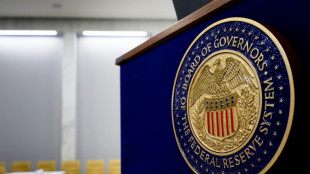

US economy returns to growth in second quarter on tariff turbulence
The US economy returned to growth in the second quarter, government data showed Wednesday, as analysts warned of distortions due to shifting trade flows over President Donald Trump's tariffs.
The world's biggest economy expanded by an annual rate of 3.0 percent in the April to June period, beating analysts' expectations and reversing a 0.5 percent decline in the first three months of the year, according to the Department of Commerce.
This swiftly prompted Trump to ramp up pressure for an interest rate cut, saying on social media that Federal Reserve Chair Jerome Powell "must now lower the rate," using his critical nickname for the central bank chief in doing so.
The Fed is due to announce its latest interest rate decision Wednesday afternoon.
A consensus forecast by Briefing.com had expected a 2.5 percent GDP growth rate.
At the start of the year, businesses rushed to stock up on products to avoid the worst of Trump's threatened tariff hikes -- but the build-up is now unwinding.
"The increase in real GDP in the second quarter primarily reflected a decrease in imports, which are a subtraction in the calculation of GDP," said the Commerce Department.
The uptick also reflected an increase in consumer spending, the report said.
The imports surge in the first quarter this year led to the largest drag on GDP growth from net exports on record, analysts at Goldman Sachs noted recently.
Analysts widely expected a bounce back as imports cooled but said this might not be sustainable.
They warned that Trump's incoming wave of tariff hikes could cause an uptick in inflation, which would in turn erode households' spending power. This stands to weigh on consumption patterns.
"It's very much distorted by the trade flows and inventory," said Nationwide chief economist Kathy Bostjancic of second quarter growth.
But the acceleration is not sustainable, she told AFP.
Since returning to the US presidency, Trump has threatened and rolled out wave after wave of fresh duties.
These included a 10 percent levy on almost all US partners, higher duties on steel, aluminum and auto imports, as well as separate actions against Canada and Mexico over illegal immigration and illicit fentanyl flows.
In April, the Trump administration separately took aim at the world's number two economy, China, as Beijing pushed back on US tariffs.
Both countries ended up imposing tit-for-tat tariffs on each other's products, reaching triple-digit levels and bringing many trade flows to a halt before Washington and Beijing reached a temporary agreement to lower duties.
After two days of talks in the Swedish capital of Stockholm this week, negotiators signaled there could be an extension of the truce -- although the final call depends on Trump.
- 'Clear deceleration' -
Bostjancic expects that underlying activity driving US growth will be moderating, although not collapsing.
"The US economy continues to navigate a complex set of crosscurrents, obscuring a clear reading of its underlying momentum," said EY chief economist Gregory Daco in a note ahead of the GDP report.
But he added that one trend is evident, which is that "economic activity is decelerating even as inflationary pressures are reemerging."
"Tariff-induced cost pressures, persistent policy uncertainty, severely curtailed immigration, and elevated interest rates are collectively dampening employment, business investment and household consumption," Daco said.
Analysts are closely eyeing the impact of Trump's tariffs on inflation, with economists warning that the duties could fuel price increases. They expect to learn more from data in the summer months.
All of this could impact consumer spending -- a key economic driver.
"The trend in GDP growth is best analyzed by considering the first and second quarters together," said Samuel Tombs, chief US economist at Pantheon Macroeconomics.
He said in an earlier note that the US economy would probably "lose more momentum" in the third quarter, when consumer prices for imported goods likely will rise sharply.
A.Bruno--IM



